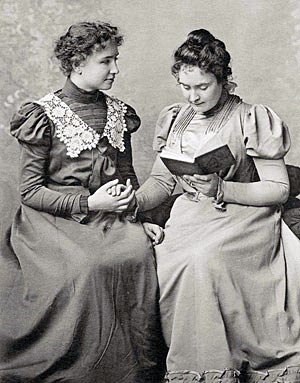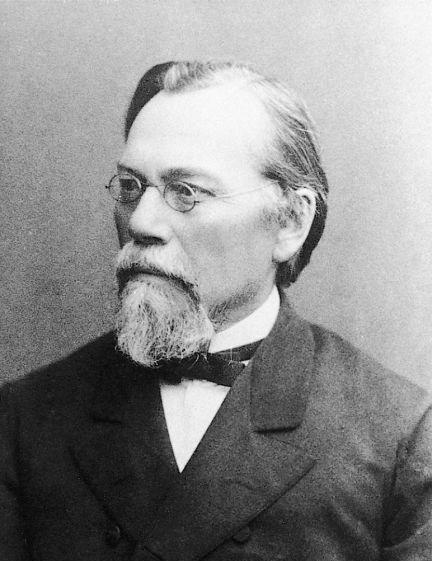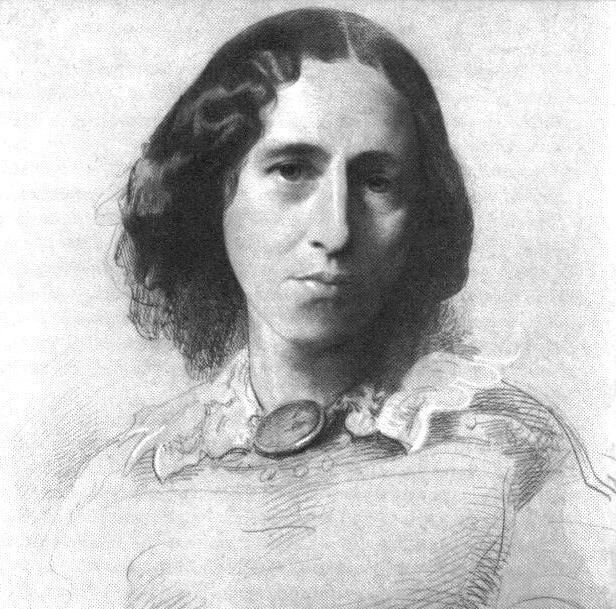|
Dinah Craik
Dinah Maria Craik (; born Dinah Maria Mulock, often credited as Miss Mulock or Mrs. Craik; 20 April 1826 – 12 October 1887) was an English novelist and poet. She is best remembered for her novel, '' John Halifax, Gentleman'', which presents the mid-Victorian ideals of English middle-class life. Life Mulock was born at Stoke-upon-Trent to Dinah and Thomas Mulock and raised in Newcastle-under-Lyme, Staffordshire, where her father was minister of a small independent nonconformist congregation. Her childhood and early youth were affected by his unsettled fortunes, but she gained a good education from various quarters and felt called to be a writer. She arrived in London about 1846, at much the same time as two friends, Alexander Macmillan and Charles Edward Mudie. Introduced by Camilla Toulmin to Westland Marston, she rapidly made friends in London and found great encouragement for her stories for the young. In 1865, she married George Lillie Craik, a partner with Alexande ... [...More Info...] [...Related Items...] OR: [Wikipedia] [Google] [Baidu] |
Hubert Von Herkomer
Sir Hubert von Herkomer (born as Hubert Herkomer; 26 May 1849 – 31 March 1914) was a Bavarian-born British painter, pioneering film-director, and composer. Though a very successful portrait artist, especially of men, he is mainly remembered for his earlier works that took a realistic approach to the conditions of life of the poor. ''Hard Times'' (1885; Manchester Art Gallery) showing the distraught family of a travelling day-labourer at the side of a road, is one of his best-known works. Early life and education Herkomer was born on 26 May 1849 at Waal, in the Kingdom of Bavaria, the son of Lorenz Herkomer (1825–1888), a wood-carver of great ability, and his wife Josephine Herkomer, née Niggl (1826–1879). His family was poor, and his mother tried to supplement his father's earnings by giving music lessons. Once his mother gave him a half sovereign for some shopping: "It was the last piece of gold in the place. I lost it. My parents were in despair."''Chums'' annu ... [...More Info...] [...Related Items...] OR: [Wikipedia] [Google] [Baidu] |
Three-volume Novel
The three-volume novel (sometimes three-decker or triple decker) was a standard form of publishing for British fiction during the nineteenth century. It was a significant stage in the development of the modern novel as a form of popular literature in Western culture. History An 1885 cartoon from the magazine ''Punch'', mocking the clichéd language attributed to three-volume novels Three-volume novels began to be produced by the Edinburgh-based publisher Archibald Constable in the early 19th century. Constable was one of the most significant publishers of the 1820s and made a success of publishing expensive, three-volume editions of the works of Walter Scott Sir Walter Scott, 1st Baronet (15 August 1771 – 21 September 1832), was a Scottish novelist, poet and historian. Many of his works remain classics of European literature, European and Scottish literature, notably the novels ''Ivanhoe'' (18 ...; the first was Scott's historical novel ''Kenilworth'', published in 1 ... [...More Info...] [...Related Items...] OR: [Wikipedia] [Google] [Baidu] |
1887 Deaths
Events January * January 11 – Louis Pasteur's anti-rabies treatment is defended in the Académie Nationale de Médecine, by Dr. Joseph Grancher. * January 20 ** The United States Senate allows the United States Navy to lease Pearl Harbor as a naval base. ** British emigrant ship ''Kapunda (ship), Kapunda'' sinks after a collision off the coast of Brazil, killing 303 with only 16 survivors. * January 21 ** The Amateur Athletic Union (AAU) is formed in the United States. ** Brisbane receives a one-day rainfall of (a record for any Australian capital city). * January 24 – Battle of Dogali: Ethiopia, Abyssinian troops defeat the Italians. * January 28 ** In a snowstorm at Fort Keogh, Montana, the largest snowflakes on record are reported. They are wide and thick. ** Construction work begins on the foundations of the Eiffel Tower in Paris, France. February * February 2 – The first Groundhog Day is observed in Punxsutawney, Pennsylvania. * February 4 – T ... [...More Info...] [...Related Items...] OR: [Wikipedia] [Google] [Baidu] |
1826 Births
Events January–March * January 15 – The French newspaper ''Le Figaro'' begins publication in Paris, initially as a satirical weekly. * January 17 – The Ballantyne printing business in Edinburgh (Scotland) crashes, ruining novelist Sir Walter Scott as a principal investor. He undertakes to repay his creditors from his writings. His publisher, Archibald Constable, also fails. * January 18 – In India, the Siege of Bharatpur ends in British victory as Lord Combermere and Michael Childers defeat the princely state of Bharatpur, now part of the Indian state of Rajasthan. * January 30 – The Menai Suspension Bridge, built by engineer Thomas Telford as the first major suspension bridge in world history, is opened between the island of Anglesey and the mainland of Wales. * February 6 – James Fenimore Cooper's novel ''The Last of the Mohicans'' is first printed, by a publisher in Philadelphia. * February 8 – Unitarian Bernardino Rivadavia becomes the first Pr ... [...More Info...] [...Related Items...] OR: [Wikipedia] [Google] [Baidu] |
George Eliot
Mary Ann Evans (22 November 1819 – 22 December 1880; alternatively Mary Anne or Marian), known by her pen name George Eliot, was an English novelist, poet, journalist, translator, and one of the leading writers of the Victorian era. She wrote seven novels: ''Adam Bede'' (1859), ''The Mill on the Floss'' (1860), ''Silas Marner'' (1861), ''Romola'' (1862–1863), ''Felix Holt, the Radical'' (1866), ''Middlemarch'' (1871–1872) and ''Daniel Deronda'' (1876). Like Charles Dickens and Thomas Hardy, she emerged from provincial England; most of her works are set there. Her works are known for their literary realism, realism, psychological fiction, psychological insight, sense of place and detailed depiction of the countryside. ''Middlemarch'' was described by the novelist Virginia Woolf as "one of the few English novels written for grown-up people"Woolf, Virginia. "George Eliot." ''The Common Reader''. New York: Harcourt, Brace, and World, 1925. pp. 166–176. and by Martin Amis an ... [...More Info...] [...Related Items...] OR: [Wikipedia] [Google] [Baidu] |
The Sunday Magazine (magazine)
''The Sunday Magazine'' (also known as ''The Sunday Magazine for Family Reading'') was a London magazine published by Alexander Strahan from 1864 until 1905. It belonged to the genre of "Sunday reading" periodicals, intended to provide religiously-inspired entertainment for families to read on Sundays. It contained a mixture of non-fiction, verse, short stories, and serialized novels, as well as featuring black and white woodcut illustrations by artists such as Robert Barnes, Edward Hughes, and George Pinwell. It was initially edited by Scottish minister Thomas Guthrie. Due to declining health, Guthrie had retired from ministry in 1864 in favour of literary efforts, and he contributed a significant amount of writing to the magazine during his tenure as editor. In May 1906, the magazine was merged with ''Good Words'', another religious periodical published by Strahan, resulting in the title ''Good Words and Sunday Magazine''. References External links Archived issues (1865� ... [...More Info...] [...Related Items...] OR: [Wikipedia] [Google] [Baidu] |
Cambridge Bibliography Of English Literature
The ''Cambridge Bibliography of English Literature'' is an encyclopaedic bibliography of literature in English published by the Cambridge University Press. It was first published in the 1940s, and a revised edition was issued from 1969 with the prefix ''New''.Joanne Shattock"Revising the Cambridge Bibliography of English Literature" ''Carlyle Annual'' No. 12 (Saint Joseph’s University Press, 1991), pp. 105-111 A third series was launched in 1999, without the prefix, but by 2022 only volume 4 had appeared. First series *Volume I, 600–1660, ed. F. W. Bateson Frederick (Noel) Wilse Bateson (1901 – 1978) was an English literary scholar and critic. Life Bateson was born in Cheshire, and educated at Charterhouse and at Trinity College, Oxford Trinity College (full name: The College of the Holy and ... (1940) *Volume II, 1660–1800, ed. F. W. Bateson (1941) *Volume III, 1800–1900, ed. F. W. Bateson (1940) *Volume IV, Index, ed. F. W. Bateson (1940) *Volume V, Supplement: ... [...More Info...] [...Related Items...] OR: [Wikipedia] [Google] [Baidu] |
Emily Bruce Roelofson
Emily Bruce Roelofson (1832-1921) was an American composer, pianist, poet and singer. She composed songs and collections through at least opus number 15. Roelofson grew up in Cambridge, Massachusetts. Her father, Alec W. Bruce, was an organist and dry goods merchant. Roelofson and her three sisters performed as the Bruce vocal quartet. She married Frederic Eugene Roelofson and they had a son and a daughter. Little is known about Roelofson’s education. Her works were published by Arthur P. Schmidt & Co. and S. Brainard Sons. Poetry *Forget Me Not (set to music by Alba Rosa Vietor) Songs *As Through the Land, opus 15 no. 3 (text by Alfred Lord Tennyson) *Carpe Diem, opus 15 no. 6 (text from A Masque of Poets) *Christmas Lullaby *From the Close Shut Window, opus 15 no. 5 (text by James Russell Lowell) *Golden Bridges *I Leaned Out of Windows, opus 15 no. 4 (text by Jean Ingelow Jean Ingelow (17 March 1820 – 20 July 1897) was an English poet and novelist, ... [...More Info...] [...Related Items...] OR: [Wikipedia] [Google] [Baidu] |
Didacticism
Didacticism is a philosophy that emphasises instructional and informative qualities in literature, art, and design. In art, design, architecture, and landscape, didacticism is a conceptual approach that is driven by the urgent need to explain. Overview The term has its origin in the Ancient Greek word διδακτικός (''didaktikos''), "pertaining to instruction", and signified learning in a fascinating and intriguing manner. Didactic art was meant both to entertain and to instruct. Didactic plays, for instance, were intended to convey a moral theme or other rich truth to the audience. During the Middle Age, the Roman Catholic chants like the '' Veni Creator Spiritus'', as well as the Eucharistic hymns like the '' Adoro te devote'' and '' Pange lingua'' are used for fixing within prayers the truths of the Roman Catholic faith to preserve them and pass down from a generation to another. In the Renaissance, the church began a syncretism between pagan and the Christian didacti ... [...More Info...] [...Related Items...] OR: [Wikipedia] [Google] [Baidu] |
Philip Bourke Marston
Philip Bourke Marston (13 August 1850 – 13 February 1887) was an English poet. Life He was born in London 13 August 1850, the son of John Westland Marston. Philip James Bailey and Dinah Maria Mulock were his sponsors, and the most popular of the latter's short poems, "Philip, my King," is addressed to him. At age three, Marston partially lost his vision due to the injudicious administration of belladonna (as a prophylactic against scarlet fever), potentially aggravated by an accidental blow. For many years he maintained enough vision to see, in his own words, "the tree-boughs waving in the wind, the pageant of sunset in the west, and the glimmer of a fire upon the hearth;" and this dim, imperfect perception may have been more stimulating to his imagination than either perfect sight or total blindness. He indulged, like Hartley Coleridge, in a consecutive series of imaginary adventures and in the reveries called up by music. His skills in verbal expression and melody were s ... [...More Info...] [...Related Items...] OR: [Wikipedia] [Google] [Baidu] |
The Little Lame Prince And His Travelling Cloak
''The Little Lame Prince and his Travelling Cloak'' (often published under its shorter title ''The Little Lame Prince'') is a story for children written by Dinah Maria Mulock Craik and first published in 1875. In the story, the young Prince Dolor, whose legs are paralysed due to a childhood trauma, is exiled to a tower in a wasteland. As he grows older, a fairy godmother provides a magical travelling cloak so he can see, but not touch, the world. He uses this cloak to go on various adventures and develops great wisdom and empathy in the process. Finally, he becomes a wise and compassionate ruler of his own land. The author's style was to stimulate positive feelings in her young readers so that they would be motivated to adopt socially correct actions in whatever circumstances they encountered. She shows how imagination (mediated by the cloak) can lead to empathy and enlightened morality. However, some critics have found a deeper theme in this story, relating to the restricted ... [...More Info...] [...Related Items...] OR: [Wikipedia] [Google] [Baidu] |
Child Prodigy
A child prodigy is, technically, a child under the age of 10 who produces meaningful work in some domain at the level of an adult expert. The term is also applied more broadly to describe young people who are extraordinarily talented in some field. The term ''wunderkind'' (from German ''Wunderkind''; literally "wonder child") is sometimes used as a synonym for child prodigy, particularly in media accounts. ''Wunderkind'' also is used to recognise those who achieve success and acclaim early in their adult careers. Generally, prodigies in all domains are suggested to have relatively elevated Intelligence quotient, IQ, extraordinary memory, and exceptional attention to detail. Significantly, while math and physics prodigies may have higher IQs, this may be an impediment to art prodigies. Examples Chess prodigies Deliberate practice K. Anders Ericsson emphasised the contribution of deliberate practice over their innate talent to prodigies' exceptional performance in chess ... [...More Info...] [...Related Items...] OR: [Wikipedia] [Google] [Baidu] |





